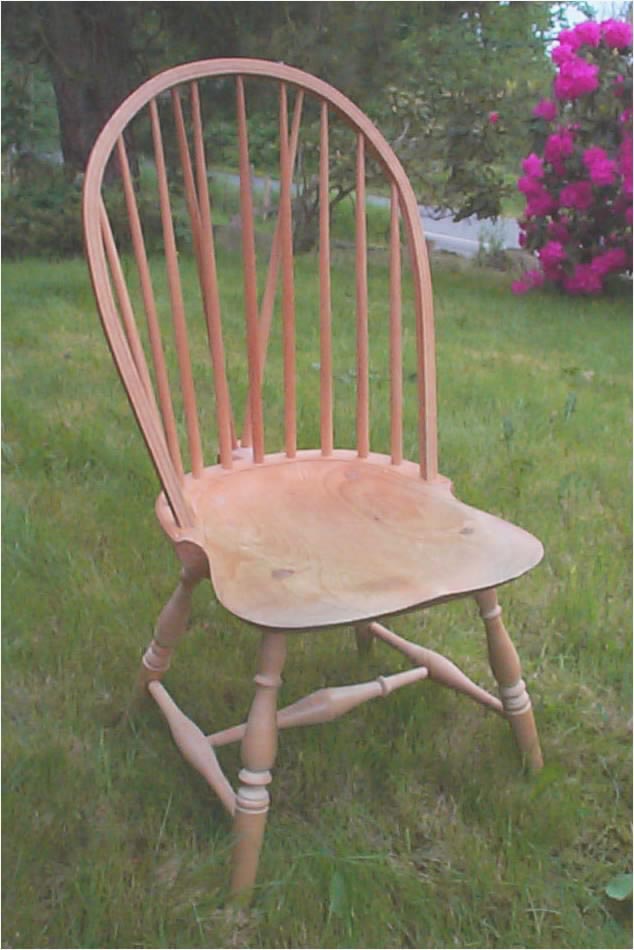
In the late 1960's a renaissance of Windsor chairmaking was begun by a man from New England whose name is Michael Dunbar. He purchased a used antique Windsor and was transfixed with its form and beauty and purposed to build one. He started building Windsors for a living and eventually wrote a book on the subject. I often saw this book and was always drawn by its title, "How To Make A Windsor Chair."
The Windsor at the left is my "pride and joy" so to speak. Windsor chairs are somewhat diffcult to build but the rewards are great, and of course you have a place to rest when the work is finished. The cool part about making Windsor chairs is that they require steam bending white oak for the bow, lots of shaping and carving for the 2" thick poplar or pine seatbottom, and then lathe work for the maple legs and stretchers, and finally tapering the red oak spindles.
In the photos below you can check out some of the antique tools and antique replicas that I've collected to make my Windsor chairs.
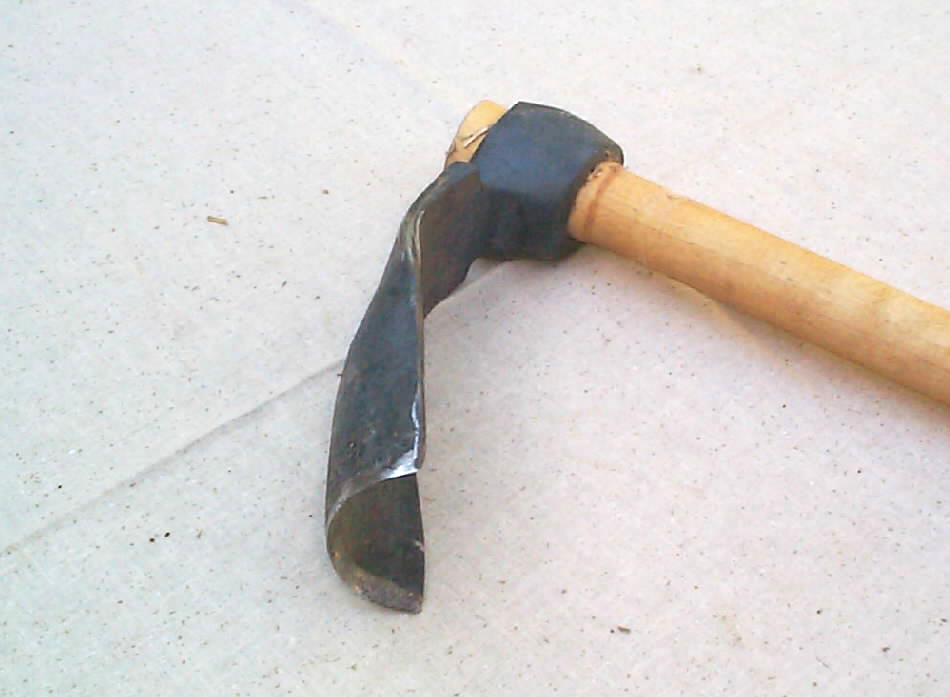 |
The gutter adze is the first tool used to begin hollowing the chair seat or bottom. Successively finer tools are used in this process. This is the full-size gutter adze that is used with the chairmaker standing on the seat, legs spread swinging the adze between his feet. Wear heavy shoes if you try this at home. More tools below. |
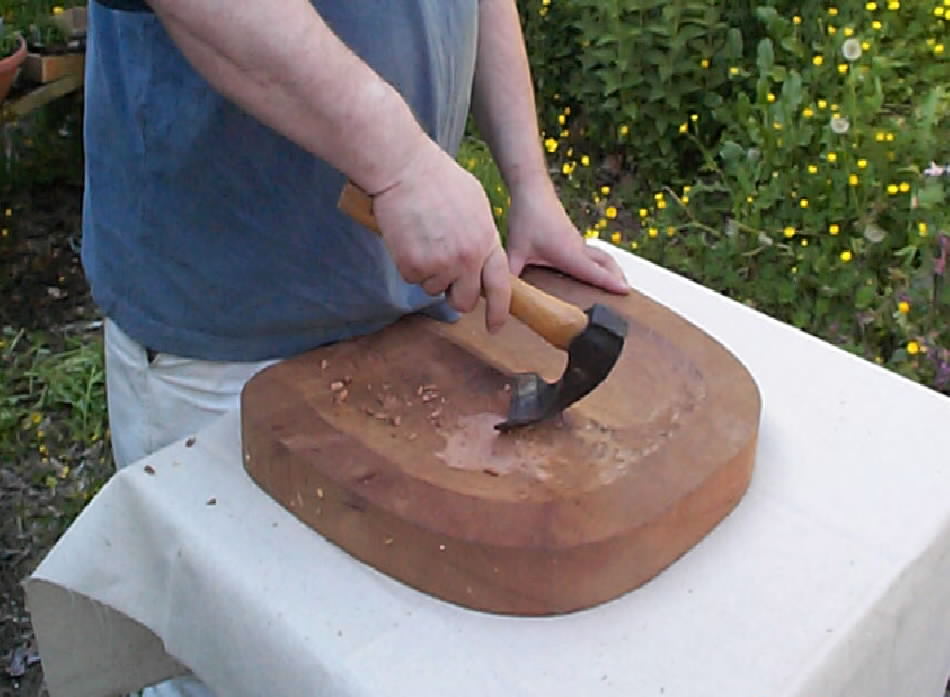 |
Here I am using the hand adze for finer shaping of the seat bottom. |
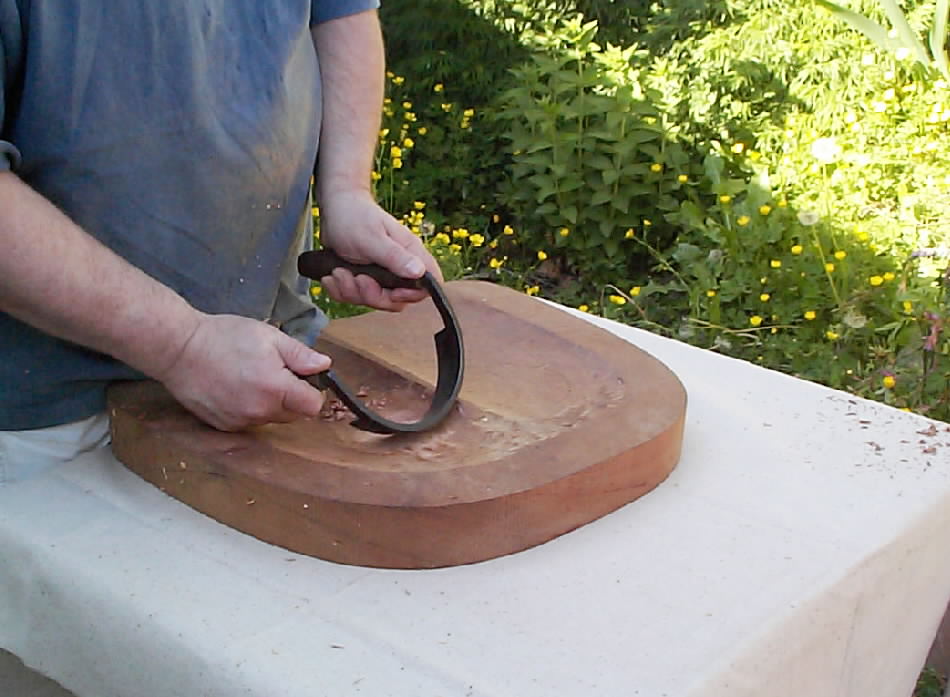 |
The next tool used in shaping the seat bottom is the scorp. It is essentially a bent draw knife. The bend enabling the chairmaker to further hollow the seat bottom. This seatbottom is actually for a Welsh Windsor and is a nice 2" thick piece of mahogany. |
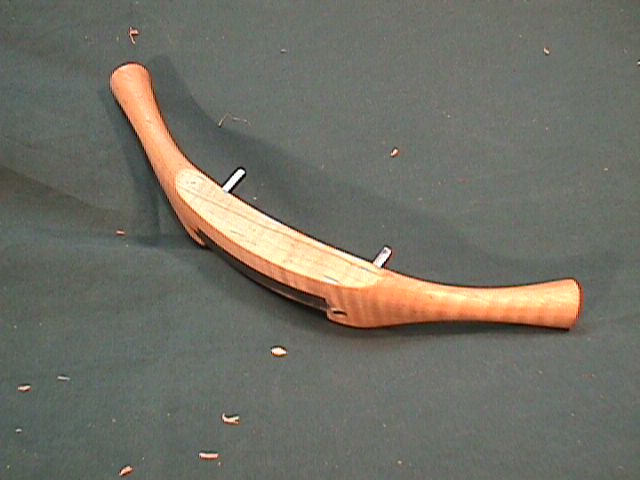 |
This unique tool is called a travisher. It is a type of spokeshave that has a curved blade. It is my favorite tool for chairmaking in that I had to seek out this tool. It was not available at any local hardware store. Well in fact none of the tools I used to make my chairs were easy to find, but the "hunt" for these forgotten tools is part of the fun and develops patience in the craftsman. |
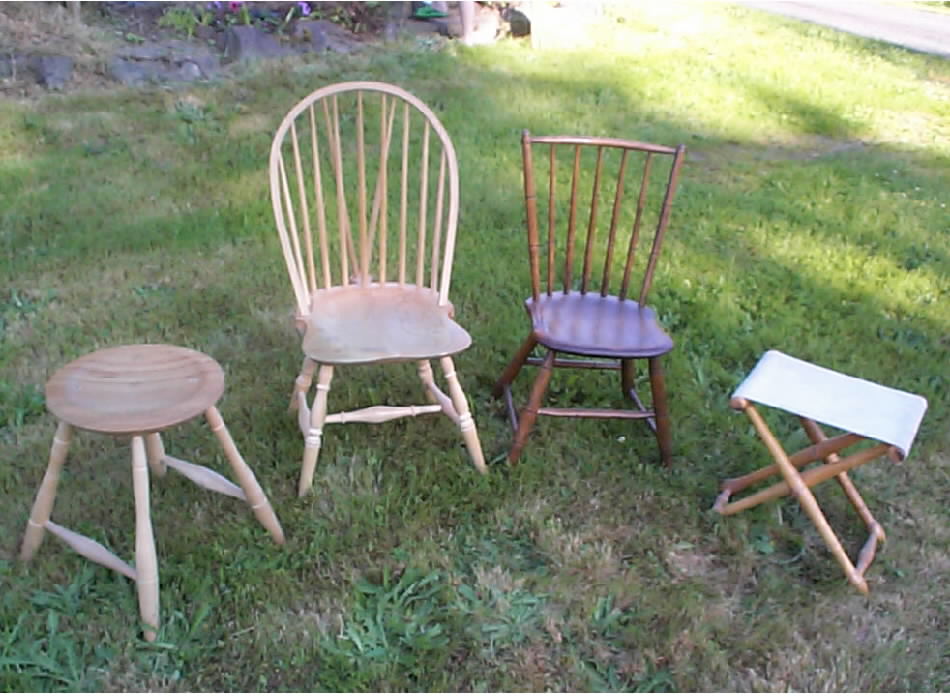 |
Meet the Windsor family. From left to right: a Windsor stool, a Windsor bow-back with bobtail, an antique childs Windsor, and my unique Windsor camping stool. The inspiration for this Windsor camping stool came from a museum photograph. Click on little Windsor to return to Home |
